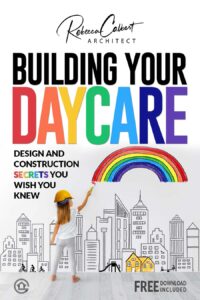Design plays a huge role in a care center and child care center design styles can vary widely. While function is obviously more important than form, a unique design can keep the kids entertained and happy while encouraging creativity.
Creative centers take advantage of everything from a silicon valley aesthetic to Abraham Lincoln’s log cabin for inspiration.
Here are some child care center design styles to consider.
Many people would love to have kids in their child care center go outside each and every day. Unfortunately, that’s not always a possibility.
If you live in a rainy area but still want to encourage kids to play as if they are outside, you probably don’t want the inside of your center to be anarchy.
Setting up artificial turf within your center is a great way to encourage kids to play at pre-determined parts of your center. Add some outdoor-style furniture and decoration and the kids will love their new indoor adventure.
A Rustic Yet Fun Child Care Center Design Style
Building something new doesn’t mean you can’t have old-school appeal.
When we built a child care facility in Suwanee, Georgia, we offset our ground-up modern conveniences with a warm and rustic brick exterior.
This gives the whole building a warm and comforting appeal that will make the kids happy to come in. And having relaxed children in your facility makes day care easier.
An “Open Office” Style Design
Open offices are becoming high-fashion once again. And while this is great for business, it’s not just adults who can take advantage.
Setting up round tables and other conveniences will help get the kids in your center talking and playing together.
Encouraging this behavior might make things noisier, but it also can be a major selling point for your child care center. That’s because it makes your center look great for childhood social development.
Separate Yet Connected Napping Space
When it comes to nap time, having a single nap time for all members of your center is a bad idea. When this is the system, one kid waking up can cause a “domino effect” that makes naps impossible to manage.
A better solution is setting up napping space behind a sliding glass door. This will encourage tired kids or kids who need to nap to take that time, but not mandate that everyone do it at the same time.
That’s not just an attractive choice or one that encourages freedom. Having this set-up could be naptime’s last line of defense.
A Fantasy-Influenced Aesthetic
Kids love to pretend and imagine. Having an indoor aesthetic that encourages this is a good thing.
Have fun with fantasy tropes while designing your child care center. Whether it’s a magical looking tree or just bright colors, the kids will feel like they’re going on an adventure every time they go to day care.
In addition, this aesthetic will really contribute to story time if the book is fantasy.
Conclusion
No matter what aesthetic you think your day care center needs, you need to design it well.
We’ve been designing child care centers for a long time. We know how to do it efficiently and effectively, and will work with you to give your design the traits it needs.
Contact us if you’re interested in a beautiful yet practical design.
-This article was written by Rebecca Calbert.
Rebecca is a licensed architect with over 30 years of experience. She owns and operates an architectural firm, Calbert Design Group, and educates her clients through the commercial real estate development process with online content at SaveOnBuilding.com. Rebecca’s “purpose” is to educate small business owners and protect them from what they don’t know.


